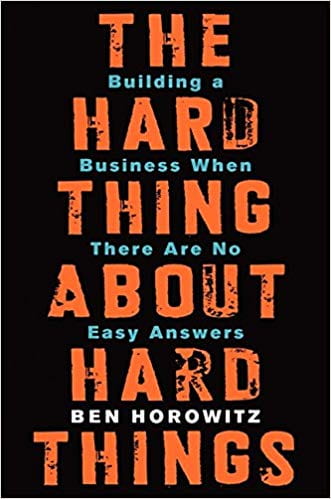By: Rachel Tunney
 Dickinson Law’s Operational Issues class students, taught by Professor Prince, had the pleasure of hearing from our February Entrepreneur of the Month, Matt Fiedler, during one of their classes. Matt Fiedler is the CEO and Co-Founder of Vinyl Me, Please. More information about Matt Fiedler and his entrepreneurial journey can be found by viewing our previous post here.
Dickinson Law’s Operational Issues class students, taught by Professor Prince, had the pleasure of hearing from our February Entrepreneur of the Month, Matt Fiedler, during one of their classes. Matt Fiedler is the CEO and Co-Founder of Vinyl Me, Please. More information about Matt Fiedler and his entrepreneurial journey can be found by viewing our previous post here.
Law students who desire careers that involve businesses and entrepreneurs benefit from hearing voices like Matt’s; the voices of actual entrepreneurs who lack legal training and live in an entrepreneurial world. Matt’s presentation allowed the students to understand operational issues from the viewpoint of the entrepreneur and included lessons that any entrepreneur may want to hear as well.
growth is not linear
Matt told the students that if anyone were to hear about Vinyl Me, Please for the first time, now almost seven years since its formation, they would believe that Matt was an overnight success. Matt reminded us, and it’s worth entrepreneurs taking note, that any outsider to a company has no idea about, what he calls, the “in-between.” To demonstrate Matt’s  point, he asked the class to look at where he was standing and to close their eyes. A few moments later, Matt asked everyone to open their eyes once more. And, as the students did, they noticed Matt was standing in a different place in the room. He says that outsiders only see the new position of the company. But that only those intimate with the company understand the turns and twists, the ups and downs, that were “in-between” those two positions. Matt refers to this crucial part of company growth as the “in-between.”
point, he asked the class to look at where he was standing and to close their eyes. A few moments later, Matt asked everyone to open their eyes once more. And, as the students did, they noticed Matt was standing in a different place in the room. He says that outsiders only see the new position of the company. But that only those intimate with the company understand the turns and twists, the ups and downs, that were “in-between” those two positions. Matt refers to this crucial part of company growth as the “in-between.”
Most people, Matt said, believe that growth should be up and to the right. A company is supposed to be born, sell a product, and generate money. Over time, the company sells more and creates even more revenue. But, Matt says, the truth is that growth is not linear; It is not up and to the right, and there is no perfect mathematical equation for any business to fit in. He calls this delusion of how a company should operate over time the “fictional belief of growth.”
almost anything (and everything) happens in the in-between
Matt presented a visual to the class that drove home his point. On the screen, was a typical up-and-to-the-right thought of growth. But then Matt clicked a button, and suddenly that perfect line turned into what looked like a three-year-old’s craft drawing: loops and turns and ups and downs replaced the perfectly straight line that had been there just seconds before. (See above.) Matt pointed to different parts of the loop. He indicated that different points represented different moments of the business. One moment was the launch of the website. Another was a forced employee firing. Another was the attainment of a revenue goal. Another was an influx of cash from raising capital. The next was a data breach. Matt said this pattern repeats itself throughout the business’s life. It can occur over a year or take place in as little as one day. Up and down. An entrepreneur must be comfortable with waking up every day and heading to work despite not knowing what might happen.
But then Matt clicked a button, and suddenly that perfect line turned into what looked like a three-year-old’s craft drawing: loops and turns and ups and downs replaced the perfectly straight line that had been there just seconds before. (See above.) Matt pointed to different parts of the loop. He indicated that different points represented different moments of the business. One moment was the launch of the website. Another was a forced employee firing. Another was the attainment of a revenue goal. Another was an influx of cash from raising capital. The next was a data breach. Matt said this pattern repeats itself throughout the business’s life. It can occur over a year or take place in as little as one day. Up and down. An entrepreneur must be comfortable with waking up every day and heading to work despite not knowing what might happen.
“The mark of an entrepreneur is someone that is willing to go through that adversity and force the reflection, learn from it, and grow.”
To further explain Matt’s point, Matt shared an operational issue that recently impacted Vinyl Me, Please:
Back in November, Vinyl Me, Please was undergoing a technology migration for its platform. The team was trying to work with its current system, which had been custom-built by a CTOO who resigned. The work was undocumented, and the team did not understand how to handle the system. At the time, the goal was to maintain the design of the system even though there was only one developer at the time who could attempt to do that. Matt wanted to take on more customers to drive up business. He understood that the membership platform system needed to be upgraded. But, he said, the “architect” behind the system, who had all the system’s detailed workings in his head, had already left the company. The team then decided to migrate to a new system at the best (worst?) time of the year: Black Friday and Thanksgiving. Typically Vinyl Me, Please, like most businesses, receive an upsurge in sales during this time. But, unfortunately, during system migration, a ton of things went wrong. The team had decided to, in addition to the membership system, upgrade the warehouse system as well. Now, information that had been stored concerning customer accounts and the system in charge of receiving and shipping orders were compromised. Everything that could have gone wrong did.
Matt Fiedler, in addition to his CEO and Co-Founder hat, possessed a third one: Manager of the Customer Service Team. Matt told the class that at one time, his company of about twenty employees was facing thousands of emails.
“And it was just like, how are we ever going to get through this?”
Matt said that willingness to fight is what marks an entrepreneur, makes them different from the average individual.
“There’s some inevitability with failure. There’s obviously an inevitability with adversity, and the only way to get through it is to continue to fight the fight. But at the same time, it forces the process of reflection.”

Matt said to succeed in the world of entrepreneurship, you have to understand what went wrong, why it went wrong, and what you are going to do to make the situation better. He says inevitability, in your journey, you are going to take another downswing. He says the only hope you have is that you will have learned well enough that you don’t make the same mistake twice.
This post was authored on February 24, 2020.
 Rachel Tunney, at the time of this post, is a 2L at Penn State Dickinson Law. Formerly a professional New York City dancer/singer, Rachel is now interested in pursuing a career in corporate litigation. Rachel currently serves as the Dickinson Law Student Representative for the Pennsylvania Bar Association and is an Associate Editor of the Dickinson Law Review.
Rachel Tunney, at the time of this post, is a 2L at Penn State Dickinson Law. Formerly a professional New York City dancer/singer, Rachel is now interested in pursuing a career in corporate litigation. Rachel currently serves as the Dickinson Law Student Representative for the Pennsylvania Bar Association and is an Associate Editor of the Dickinson Law Review.















